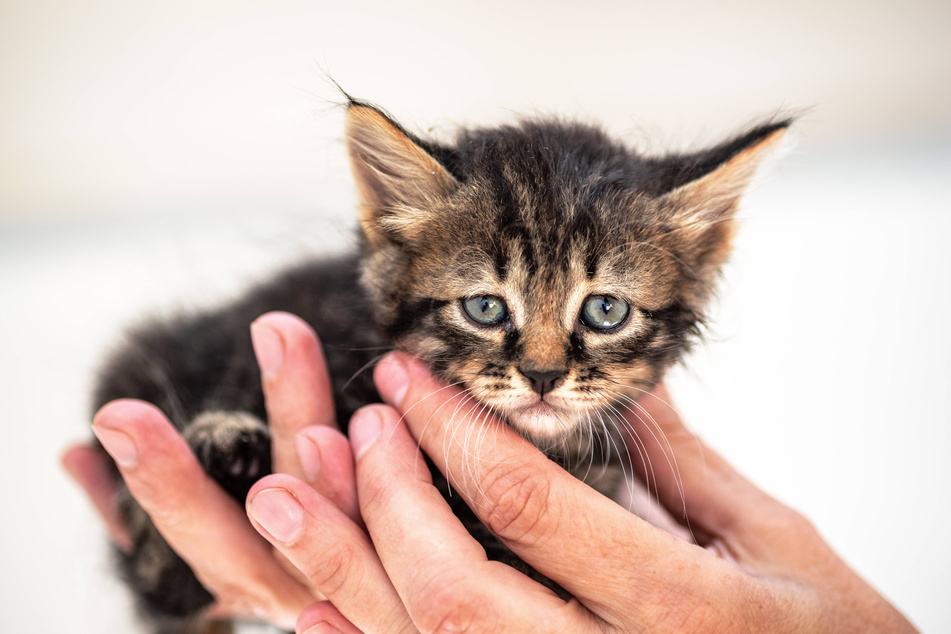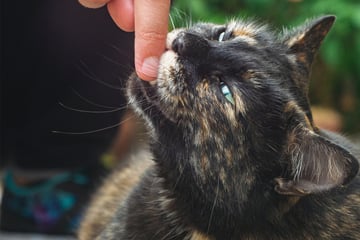Can cats cry?

Do cats cry tears when they're sad?
The simple answer is yes, cats can cry. Just like humans, cats have tear glands, so if you have ever seen a picture of a crying cat, those are legitimate tears and likely not faked. The difference, though, is the reasoning behind a cat's need to cry. After all, these are not humans, they feel things differently.
When a cat is upset, their response is not to cry, but instead to act on those emotions in more behavioral ways. Cats that are sad will get grumpy and depressed, will wander around their home in silence, and get increasingly desperate to fix whatever the problem is that's causing their negative emotions.
Important: If you see a video on social media showing off a crying cat alongside some kind of tragic story, this is likely misleading and clickbait content. You can ignore it.

Why do cats cry?
There are many reasons which can explain why cats feel the need to cry, but the first thing we need to do is establish something clearly: While we have used the term 'cry,' what they are doing is not really crying. Cats that seem to be crying usually just have watery eyes for one reason or another.
Here are the most common reasons why cats cry:
- Sickness: There are a variety of health-related issues that could cause your cat to have watery eyes that seem to drip out like tears. In many of these cases, you need to seek out treatment as soon as possible.
- Anxiety or stress: Sometimes emotional responses can cause crying. This is not the result of your cat being suddenly upset and sad, as it does in humans, but can be the result of long-standing stress and anxiety.
- Hunger or thirst: In some cases, if your cat is particularly hungry or thirsty, it might get gunk around the eyes which then looks like crying.
- Aging: As cats get older and older, they get more likely to suffer from watery eyes. This is natural and usually quite harmless, but not always.
- Infections: While health related, an infection is different as it might be something that is directly attacking the eye. In such a case, you need to go to the veterinarian immediately as your cat's eyesight could be at risk.
- Allergies: Cats suffer from allergies too, and just like in humans, these allergies can see cats get very watery and runny eyes.
Be careful: If you love your cat, you need to react appropriately for any crying attack you may witness. There are a variety of reasons, as described, why your cat might cry. When you suspect that it is something dangerous or worrying that might be causing the issue, make sure to go immediately to the vet.
How to treat a crying cat

It is vital that you treat a cat properly when it is sick or unwell. Seeing as crying can be a sign of sickness or discomfort, this principle will always apply. The most important step, of course, is to get everything checked, but then it of course starts to come down to simple symptomatic treatment.
Here's how to treat a crying cat:
- Step 1: Start by taking your cat to the veterinarian and having it checked out thoroughly. This is incredibly important as your vet can figure out what's wrong and prescribe a treatment.
- Step 2: As long as you have been given approval from your vet, you can help to relieve the symptoms your cat is suffering. We would recommend by initially applying some cat eye rinse to calm down any irritation that might be present.
- Step 3: Carefully use some high quality and delicate cat eye wipes to keep away any irritants and clean out your cat's eye ducts.
- Step 4: Having looked after your cat's eyes, keep an eye out for any future symptoms or any signs that could suggest something more serious is wrong.
It's important, of course, to remember that we are not medical experts - so only do what we described after getting permission from your vet.
Ultimately, your cat's health will always be in your hand. Keep paying attention and if symptoms like crying eyes rear their ugly heads, it's off to the vet you go.
Cover photo: IMAGO/Zoonar



